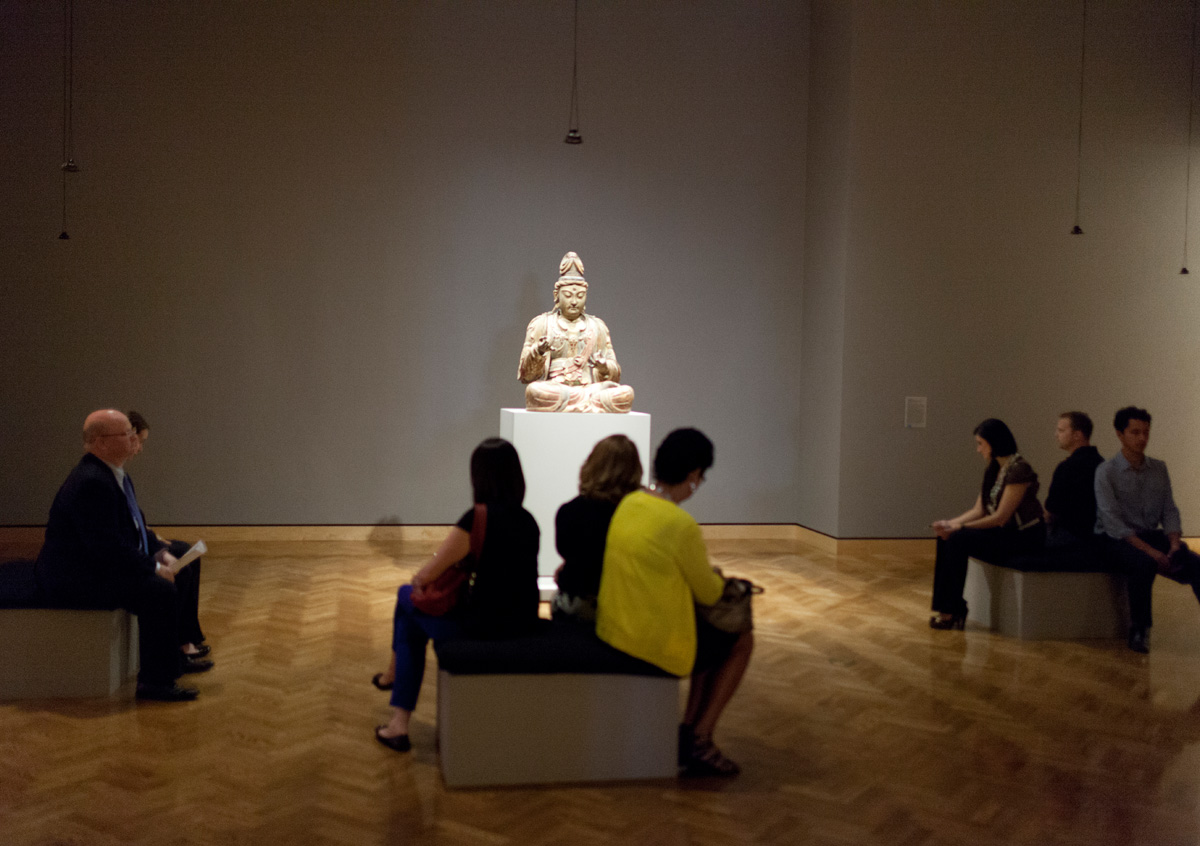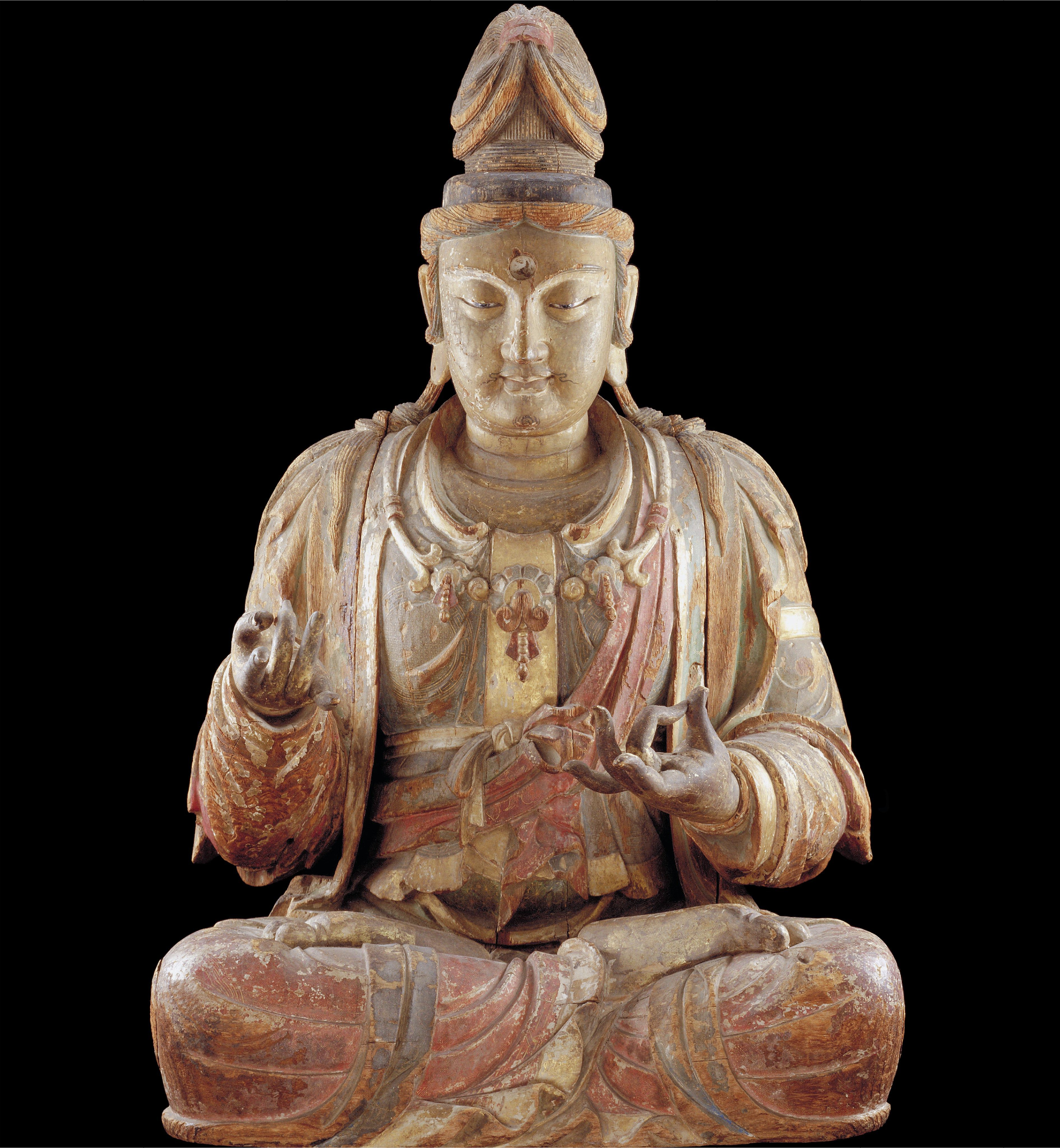Are You There, Guanyin?
Guanyin, “the one who hears our cries,” has been worshipped for thousands of years in many cultures as a deity of mercy and compassion. The bodhisattva manifests as male or female depending on the person in need. This reinstallation of one of Mia's masterpieces was developed by artist Jan Estep as a creative interpretation of Buddhist principles, emphasizing the sculpture’s art-historical importance, engaging its 2,500-year-old religious tradition, and extending its compassionate presence to contemporary audiences.
As part of the reinstallation, Estep has installed meditation pillows with a sound system, which plays phrases adapted by Estep from traditional Buddhist meditations on compassion and loving kindness. She recorded a range of voices speaking these phrases, literally expressing the compassionate Buddhist spirit of Guanyin and all those who turn to the deity for support. The artist’s interpretive installation opens up a space for reflection and visitors you to more closely experience this sculpture as an object of devotion.
Are you there, Guanyin? was presented as part of Mia's Sacred exhibition, where curators assembled art from every corner of the world. Although these works span time, distance, and disparate cultures, they share an evolving sense of the sacred. Each of the ten galleries in the exhibition featured an installation or “mini-show” designed around different themes or narratives inspired by the word “sacred.” Conventionally used to describe something or someone imbued with divinity, the word has evolved as societies have become more diverse and secular. What’s sacred today? The word hinges on the speaker: what is sacred is often very personal.
Many of the objects in Sacred were never intended for display in a museum. Taken out of their usual contexts, they asked to be seen differently, posing provocative questions about what is sacred. How did their presence here change our perception of them? In these juxtapositions, visitors explore historical and contemporary expressions of the divine, the spiritual, the essential, and the beloved while reflecting on the meaning of the word “sacred.” What does it mean to you?
Jan Estep: Are You There, Guanyin?, Minneapolis Institute of Art.
Photos courtesy of Minneapolis Institute of Art and Jan Estep






